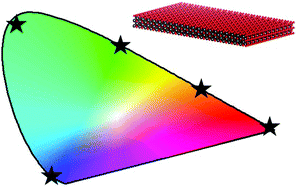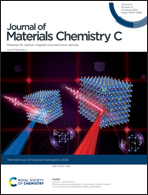Colloidal quantum wells for optoelectronic devices†
Abstract
Colloidal quantum wells, also called nanoplatelets, are nanoscopic materials displaying quantum confinement in two dimensions. Unlike colloidal quantum dots, colloidal quantum well ensembles have no inhomogeneous broadening due to an atomically-precise definition of the short axis, a fact which results in much narrower ensemble absorption and emission. Thus, colloidal quantum wells can translate many advantages of colloidal nanocrsytals or other solution-processable materials, such as scalable synthesis and substrate-agnostic deposition (particularly compared to epitaxial quantum wells), without sacrificing material uniformity. Due to very narrow photoluminescnece peaks, these materials have found a home in applications involving light emission, such as downconversion enhancement films, light-emitting diodes, and lasers, in which they represent some of the best performers among solution-cast materials. As argued in this review, the full spectrum of epitaxial quantum well devices offers a roadmap to other potential applications, such as detection, electronics, electro-optics, non-linear optics, or intersubband devices, in which only nascent efforts have been made.

- This article is part of the themed collection: Journal of Materials Chemistry C Emerging Investigators


 Please wait while we load your content...
Please wait while we load your content...